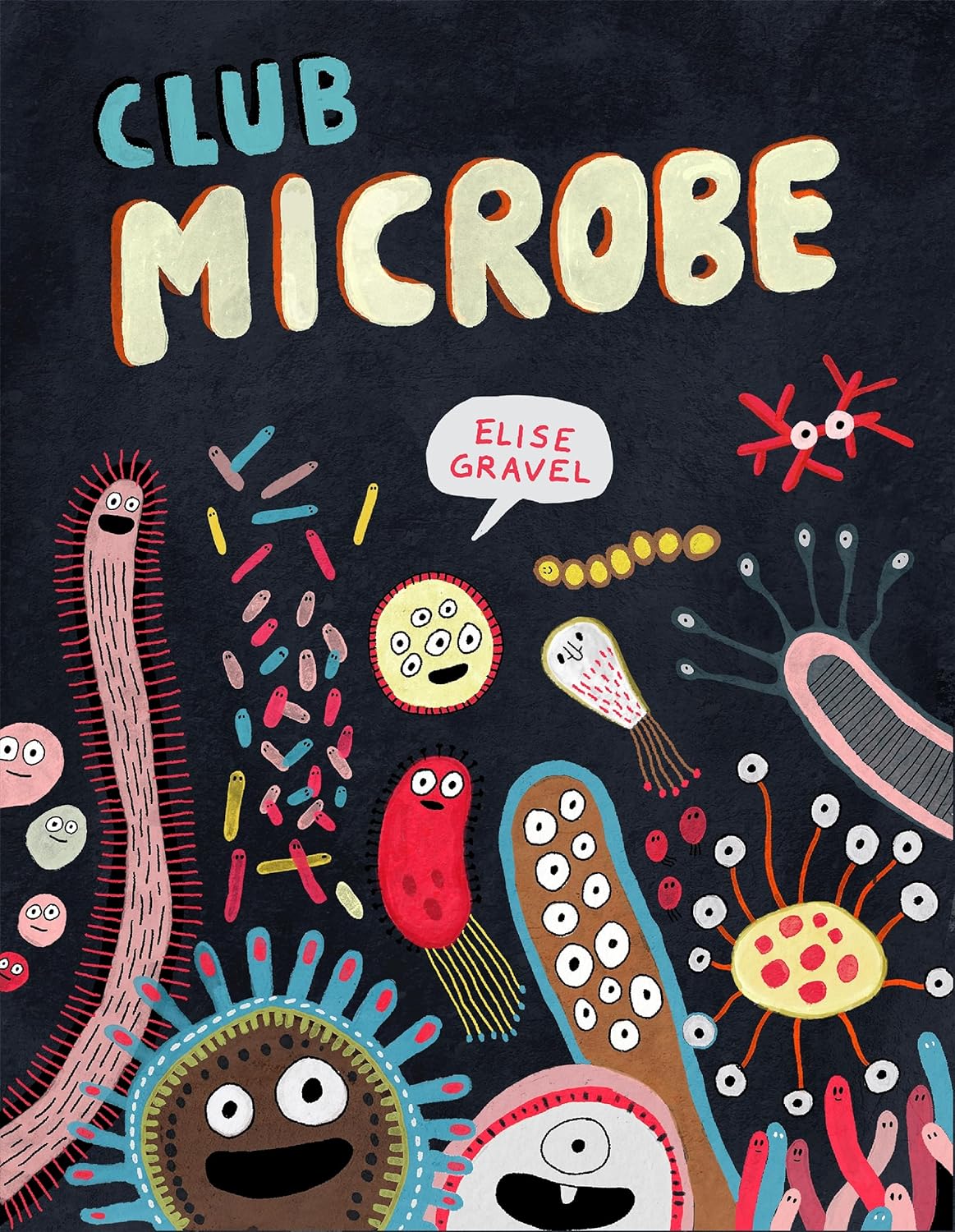Club Microbe

Club Microbe
Elise Gravel has lent her writing and illustrating skills to the creation of both picture storybooks and primary nonfiction. Working in the same vein as The Mushroom Fan Club (www.cmreviews.ca/node/599), and The Bug Club (www.cmreviews.ca/node/2599), she now presents readers with Club Microbe.
Ascribing membership in a club to these microscopic organisms lends a particular charm to the whole exercise, underscoring the connections among them. This device echoes the earlier examples of easy science books from this author. From the outset, Gravel is eager to share her knowledge of, and fascination with, microbes. That she sees them all as small, mighty and definitely worthy of our respect is clear from the very beginning of the book.
Microbes are living beings, but they aren’t animals, or plants, or insects.
They don’t have legs, brains, mouths or eyes. (Except in my drawings.)
(Yes, Gravel’s microbes do have eyes and legs, and even teeth, sometimes.)
Introducing the different microbe families!
Bacteria. Viruses. Fungi. Protists. Algae.
The book goes on to do more than introduce the families but to describe them succinctly and to offer examples. The tone of the text is more than a little jocular, but there is much information included here. Readers learn that there are good microbes and bad ones and that microbes are everywhere.
Our bodies are covered and filled with MILLIONS of germs.
If we put them all together and weighed them, these germs would be
as heavy as a brick. And the vast majority of these microscopic organisms
are FRIENDLY and super USEFUL!
By bringing the subject down to the personal level for a child (not only is the human body full of microbes, we wouldn’t have bread or cheese without them) makes the book even more engaging. Hand-lettered text in a variety of sizes, ideas presented by the use of speech balloons, and funny pictures accentuated with lots of soft primary tones make this easy science book most eye-catching. However, one area where young readers may stumble is in the use of the long names of some of the organisms mentioned. Knowing that the terms come by and large from Latin, as the author points out, will not help with the pronunciation of words such as “prochlorococchus” or “photobacterium leiognathi”. Knowing that ”pseudomonas syringae” is the bacterium around which water crystallizes to make snowflakes is a fun fact that might be hard to pass along to a friend.
Because microbes is a topic that will be unfamiliar to even science-minded children, not as many will naturally gravitate towards it the way they might Gravel’s other books. Those who do, however, will learn a lot about the world of microbes, but some guidance from a teacher or a parent may be required.
Ellen Heaney is a retired children’s librarian living in Coquitlam, British Columbia.
